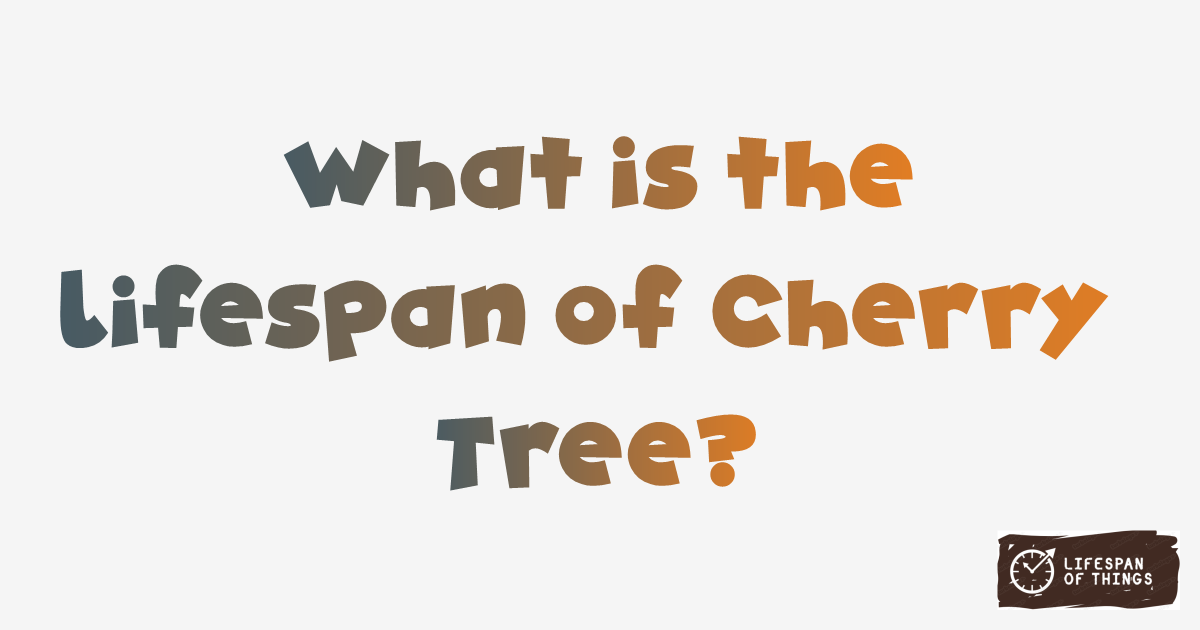
50 - 100 Years
Lifespan of Cherry Tree is 50 - 100 Years. Cherry Trees can live for 50-100 years, depending on various factors like proper care, environmental conditions, and disease prevention. Regular pruning, adequate water, and sunlight exposure can help extend the lifespan of Cherry Trees.
Useful Information
Cherry Trees thrive in well-drained soil with ample sunlight. They require moderate rainfall and protection from harsh weather. Mature Cherry Trees develop strong root systems that stabilize soil and prevent erosion, commonly found in gardens and orchards.
Cherry Trees contribute to the environment by providing habitat for wildlife and supporting biodiversity. They also improve air quality by absorbing carbon dioxide and releasing oxygen. The fallen leaves enrich the soil, promoting the growth of other plants.
Learn how fruit trees support biodiversity by providing habitats for wildlife species and enriching the ecosystem. Read more
Cherry Trees have practical uses in construction, furniture making, and decorative landscaping. The cherries themselves are used for culinary purposes and medicinal remedies. Cherry blossoms are also popular for ornamental displays and cultural celebrations.
Conservation efforts for Cherry Trees focus on preserving natural habitats, preventing deforestation, and controlling diseases. Planting new Cherry Trees and promoting sustainable forestry practices are essential for maintaining Cherry Tree populations. Global cooperation is necessary to protect various Cherry Tree species.
Notable examples of Cherry Trees include the Tidal Basin Cherry Trees in Washington, D.C., known for their stunning bloom during the Cherry Blossom Festival. Japan's Yoshino Cherry Trees attract millions of visitors during cherry blossom season, symbolizing beauty and renewal in Japanese culture. These iconic examples showcase the cultural significance of Cherry Trees worldwide.
Lifespan Comparisons
| Compared Item | Comparison Description |
|---|---|
| Lifespan of Apple Tree | Cherry trees and apple trees have a similar lifespan, lasting between 50-100 years. |
| Lifespan of Pear Tree | Cherry trees and pear trees share a common lifespan of around 50-100 years. |
| Lifespan of Peach Tree | Peach trees have a shorter lifespan compared to cherry trees, lasting about 20-50 years. |
| Lifespan of Orange Tree | Orange trees can live 50-150 years, potentially outlasting cherry trees. |
| Lifespan of Alocasia Polly | Alocasia Polly plants have a shorter lifespan than cherry trees, living around 5-10 years. |
| Lifespan of Calathea Orbifolia | Calathea Orbifolia plants last 3-5 years, which is notably shorter than a cherry tree's lifespan. |
| Lifespan of Fiddle Leaf Fig | Fiddle Leaf Fig plants typically live 3-5 years, similar to cherry trees in lifespan. |
| Lifespan of Pilea Peperomioides | Pilea Peperomioides plants have a lifespan of 2-5 years, comparable to cherry trees. |
| Lifespan of Canned Peaches | Canned peaches last around 3-5 years, like cherry trees in shelf life. |
| Lifespan of Canned Cherries | Canned cherries boast a similar 3-5 year shelf life as cherry trees grow. |
| Lifespan of Canned Pears | Canned pears have a lifespan of approximately 2-5 years, differing slightly from cherry trees. |
| Lifespan of Canned Apples | Canned apples also have a lifespan of 2-5 years, similar to cherry trees. |
| Lifespan of Canned Chicken Noodle Soup | Canned chicken noodle soup lasts 2-5 years, similar to the lifespan of cherry trees. |
| Lifespan of Canned Tomato Soup | Canned tomato soup can last 2-5 years, aligning with the shelf life of cherry trees. |
| Lifespan of Canned Cream of Mushroom Soup | Canned cream of mushroom soup has a lifespan of 2-5 years like cherry trees. |
Frequently Asked Questions
Lifespan of Cherry Tree is 50 - 100 Years.
To help your Cherry Tree thrive, plant it in well-drained soil with plenty of sunlight, and protect it from harsh weather conditions.
Cherry Trees contribute to the environment by providing habitat for wildlife, supporting biodiversity, and improving air quality by absorbing carbon dioxide.
Cherry Trees have practical uses in construction, furniture making, and decorative landscaping. The cherries can be used for culinary purposes and medicinal remedies.
To support conservation efforts, plant new Cherry Trees, promote sustainable forestry practices, and participate in global cooperation to protect Cherry Tree species.
Notable examples include the Tidal Basin Cherry Trees in Washington, D.C., and Japan's Yoshino Cherry Trees, known for their stunning bloom during cherry blossom season.








